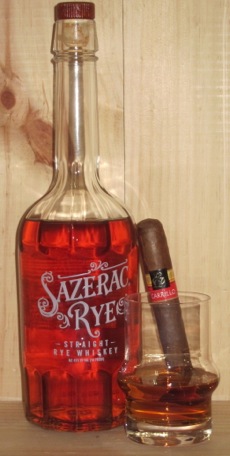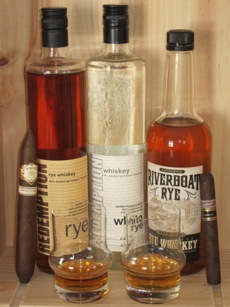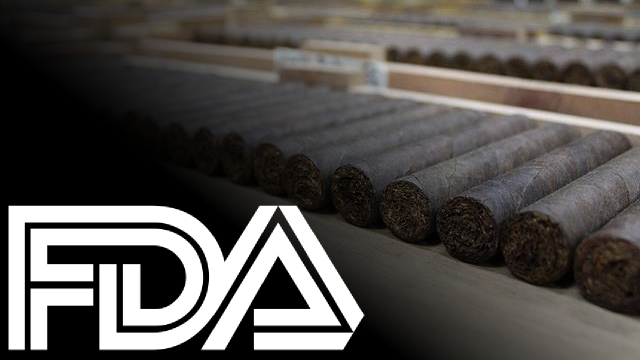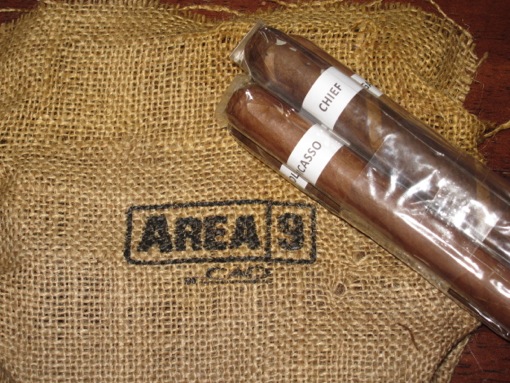Cigar Spirits: Sazerac Rye
11 Jun 2014
Recently, I’ve been writing up plenty of rye whiskeys (see here, here, here, here, here, here, here, here, here, here, here, here, and here) in order to put together a Rye Guide along the lines of our A-Z Guide to Bourbon. As you can see, I’ve covered quite a few ryes, but I recently noticed one glaring omission: Sazerac Rye.![]()
 Sazerac, along with Rittenhouse and Bulleit, are three affordable rye whiskies ($20-30) that are staples at my bar. Unlike Sazerac 18 or the highly sought-after Buffalo Trace Antique Collection, standard-issue Sazerac Rye (sometimes called “Baby Saz”) is distilled at the Buffalo Trace Distillery and aged six years before being bottled at 90-proof. Another member of the Buffalo Trace Antique Collection, Thomas H. Handy Sazerac Rye, is essentially a barrel-proof limited release of Baby Saz.
Sazerac, along with Rittenhouse and Bulleit, are three affordable rye whiskies ($20-30) that are staples at my bar. Unlike Sazerac 18 or the highly sought-after Buffalo Trace Antique Collection, standard-issue Sazerac Rye (sometimes called “Baby Saz”) is distilled at the Buffalo Trace Distillery and aged six years before being bottled at 90-proof. Another member of the Buffalo Trace Antique Collection, Thomas H. Handy Sazerac Rye, is essentially a barrel-proof limited release of Baby Saz.
Sazerac (along with Handy) is reportedly made with a mashbill of 51% rye, 39% corn, and 10% malted barley. It features a bright amber color and with a nose brimming with fresh, floral notes and hints of licorice. On the palate Sazerac shows a nicely balanced combination of buttered popcorn, toffee, and clove with bit of pepper. The finish has caramel and baking spices.
Is Sazerac Rye going to blow your mind with its amazing-ness? Probably not. But it’s very enjoyable and an obvious standout value at $25 a bottle. It’s a versatile rye that’s plenty good enough to be sipped straight (as I recommend), but you wouldn’t be heart-broken if your buddy throws a bunch of ice cubes in it or decided to mix it into a Manhattan.
Naturally, it goes great with a fine cigar. I’d recommend a balanced, medium-bodied smoke. Specific recommendations include the Arturo Fuente King T Rosado Sun Grown, Illusione Epernay Le Matin, or the Tatuaje Black.
If you’re a rye fan who hasn’t tried Sazerac Rye, you’re missing out. There are very few better ways to spend $25 on a whiskey of any kind.
photo credit: Stogie Guys


 Mr. Sam—named after Bill Paley’s grandfather and broadcasting pioneer, as well as
Mr. Sam—named after Bill Paley’s grandfather and broadcasting pioneer, as well as 
 If the Lawrenceburg address sounds familiar, it should. It’s 95/5 rye/malted barley mashbill is the basis of a number of ryes on the market:
If the Lawrenceburg address sounds familiar, it should. It’s 95/5 rye/malted barley mashbill is the basis of a number of ryes on the market: 


 Patrick Ashby
Co-Founder & Editor in Chief
Patrick Ashby
Co-Founder & Editor in Chief Patrick Semmens
Co-Founder & Publisher
Patrick Semmens
Co-Founder & Publisher George Edmonson
Tampa Bureau Chief
George Edmonson
Tampa Bureau Chief